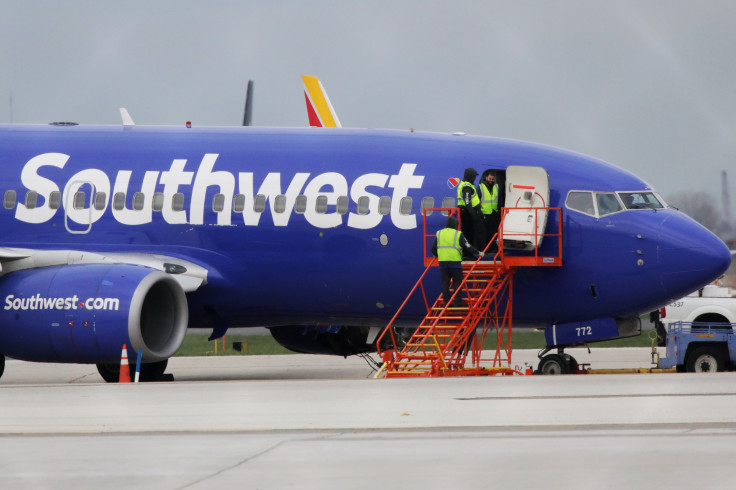JetBlue Is Probably Serious About Flying To Europe, Southwest Isn't

For several years, executives at JetBlue Airways (NASDAQ:JBLU) have been hinting at the possibility of flying to Europe. The carrier even negotiated the right to convert some of its orders for Airbus (NASDAQOTH:EADSY) A321neos to the longer-range A321LR model. However, JetBlue has yet to follow through with firm plans for trans-Atlantic service.
More recently, some pundits have speculated that Southwest Airlines' (NYSE:LUV) launch of West Coast-Hawaii flights could pave the way for it to enter the European market, too. CEO Gary Kelly may have encouraged this speculation by noting last year that Southwest's Baltimore-Washington focus city could be a logical jumping-off point for flights to Europe.
There have been hints this month that JetBlue could formally announce plans to fly to Europe within the next couple of weeks. By contrast, Southwest isn't likely to develop more than a token presence in Europe -- if that -- for at least the next decade.
Europe makes a lot of sense for JetBlue
On April 10, JetBlue will hold a special employee-only "chat about JetBlue's vision and strategy" in New York. Speculation has been rife that JetBlue would use this event to announce its plans for flying to Europe, partly because "the background of the invitation resembled the seat fabric on London's subway system," as Bloomberg put it.
Indeed, JetBlue's management previously stated that the carrier would decide during 2019 about whether to convert some Airbus orders to the A321LR. JetBlue had initially planned to make this decision in late 2017, but it delayed the timetable to continue studying the business case.
The case for JetBlue to enter the trans-Atlantic market is quite compelling. The A321LR has a lot in common with the other Airbus A320-family aircraft already in JetBlue's fleet, which will minimize the complexity of adding flights to Europe. Furthermore, the carrier's two largest focus cities are New York and Boston, both of which are relatively close to Europe.
Meanwhile, JetBlue's lack of trans-Atlantic service is one of its biggest weaknesses in competing for business travelers in Boston, where it is already the largest airline. JetBlue flies to 40 of the top 50 destinations from Boston today; four out of the 10 that it doesn't serve are in Europe: Dublin, London, Paris, and Reykjavik.
The A321LR has ample range to fly from Boston and New York to all four of those cities, along with other key markets such as Amsterdam, Frankfurt, and Madrid. Lastly, JetBlue already has a highly acclaimed flat-bed business class offering that it uses for transcontinental flights, which could be adapted for the trans-Atlantic market.
Southwest flights to Europe don't make nearly as much sense
The case for Southwest Airlines flying to Europe is much weaker. For one thing, its inflight product is geared toward short-haul flights. The lack of inflight meals and extra-legroom seats could be a deal-breaker for some travelers on West Coast-Hawaii routes and could be even more problematic on flights to Europe, for which flight times would be even longer.
However, the biggest issue is that Southwest's aircraft don't have enough range to serve most of Europe effectively from the carrier's big markets. Baltimore-Washington International Airport (BWI) is the only one of Southwest's 10 largest focus cities located in the Northeast. (None of the carrier's other markets in the region are even close.)
Southwest Airlines does have a big presence at BWI, with more than 200 daily flights. But BWI is nearly 400 miles further from Europe than Boston. Additionally, Boeing's 737 MAX 8 has a stated range of only 3,550 nautical miles, compared to 4,000 nautical miles for the A321LR.
That means Southwest probably could fly the 737 MAX 8 from BWI to some popular leisure destinations like Reykjavik, Dublin, and Edinburgh. But flying to London would be a stretch, and Continental Europe would be out of the question. The smaller 737 MAX 7 will have more range -- an estimated 3,900 nautical miles -- bringing London and a few key cities in Continental Europe within range. But it will have significantly higher unit costs than the 737 MAX 8, making it much harder to turn a profit on long-haul routes.
Different business models and different regional footprints
It's not very surprising that flying to Europe might make sense for JetBlue Airways but not for Southwest Airlines. JetBlue's roots are in the Northeast, while Southwest got its start in Texas and expanded from there. Long-haul transcontinental flights are part of JetBlue's DNA, whereas they are still relatively new for Southwest. And JetBlue has offered extra-legroom seats for an additional fee for more than a decade, while its rival has maintained an open-seating policy.
Given the capabilities of current technology -- i.e. the Airbus A321LR and Boeing 737 MAX 8 -- flying to Europe is a natural extension of JetBlue's business, just as flying to Hawaii is a natural growth avenue for Southwest Airlines.
Southwest certainly may decide a few years down the road to start flying from BWI to nearby points in Europe that it can reach with the 737 MAX: i.e. Iceland, Ireland, and Great Britain. But with just a few dozen daily departures (at most) at other Northeast airports closer to Europe -- compared to more than 150 daily departures for JetBlue in both New York and Boston -- Southwest Airlines isn't likely to make a meaningful move into Europe in the foreseeable future.
This article originally appeared in the Motley Fool.
Adam Levine-Weinberg owns shares of JetBlue Airways and Southwest Airlines. The Motley Fool owns shares of and recommends Southwest Airlines. The Motley Fool recommends JetBlue Airways. The Motley Fool has a disclosure policy.





















